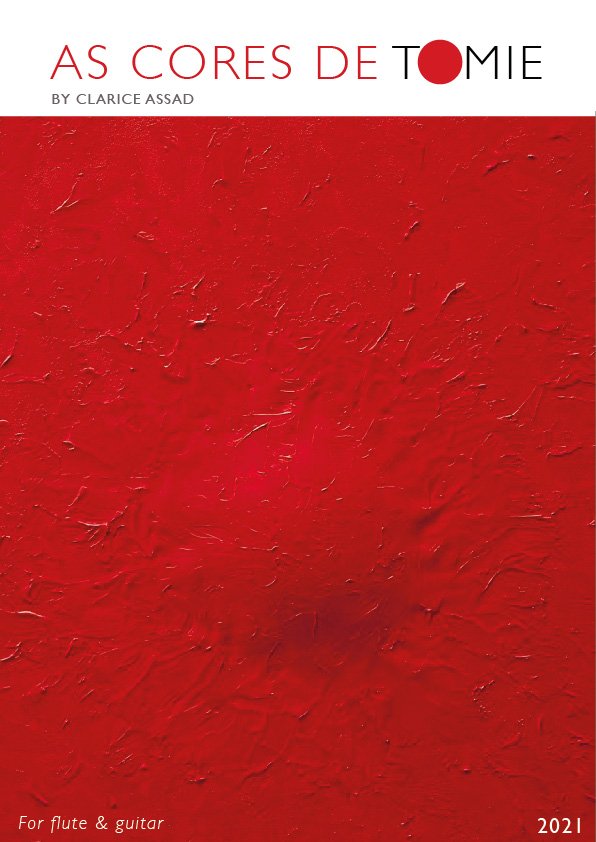As Cores de Tomie
Original price was: $50.00.$40.00Current price is: $40.00.
As Cores de Tomie is a collection of four songs, scored for flute and guitar, inspired by works and concepts of Japanese-Brazilian artist Tomie Ohtake (1913-2015).
The first movement, “Shades of Blue,” is a wandering, melancholy waltz, a sentiment that I often find expressly associated with this particular color. “Imperfect Geometry” is inspired by Ohtake’s giant red sculptures, which are part of the busy and vibrant landscape of São Paulo, her adopted city. The third movement, “Watercolors,” emerged while I explored her works for this medium. There is a singular beauty to the way she handled the forms, the subtleties of color and shapes emit a rather calming effect. At the same time, some of those paintings are quite stark, so it was my instinct to portray the artist’s conception as if in real-time.
The final song in the suite, entitled ”The Starfish” (or “The Ocean’s Star”), concerns a yellow sculpture that stood at the top of Lagoa Rodrigo de Freitas (Rio de Janeiro’s most famous lagoon); from 1985-1900. The song is supposed to summon the sounds, colors, and characteristics of that particular era in my native city.
Please note: This purchase includes only a PDF (digital version) of this work.
For classical guitar and flute, As Cores de Tomie is a collection of songs for flute and guitar inspired by works of Japanese-Brazilian artist Tomie Ohtake (1913-2015).
This work is a commission by Chamber Music America. One of the most beautiful music pairings is between the classical guitar and flute. The delicate nature of the classical guitar provides a perfect sound to the flute’s light and airy sound.
As Cores de Tomie may be performed as a suite or standalone songs. The first movement, “Shades of Blue,” is a melancholy waltz, a sentiment I often associate with this particular color. “Imperfect Geometry” is my take on Ohtake’s giant red sculptures, which are part of the busy and vibrant landscape of São Paulo, her adopted city. The third movement, “Watercolors,” emerged while I explored her works for this medium.
These four songs for classical guitar and flute honor her singular approach to forms. The subtleties of color and shapes emit a rather calming effect. However, some of those paintings are pretty stark, so it was my instinct to portray the artist’s conception as if in real-time.
The final song,” The Starfish” (“The Ocean’s Star”), concerns a yellow sculpture that stood at the top of Lagoa Rodrigo de Freitas (Rio de Janeiro’s most famous lagoon) from 1985-1900. The song is supposed to summon the sounds, colors, and characteristics of that era in my native city.
ABOUT THE ARTIST:
Tomie Ohtake was born in 1913 in Kyoto. In 1936, when she was twenty-three years old, She traveled to Brazil to visit a brother but could not return to Japan due to World War II. Ohtake settled in São Paulo with her husband, her son Ruy, who was born there in 1938. She started painting in 1951, at the age of 40, after a visit to the studio of the painter Keisuke Sugano.





